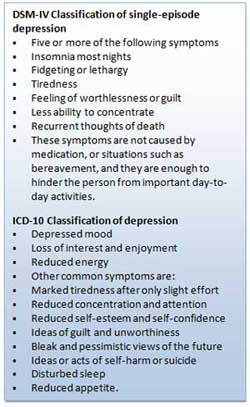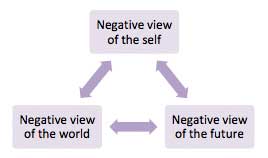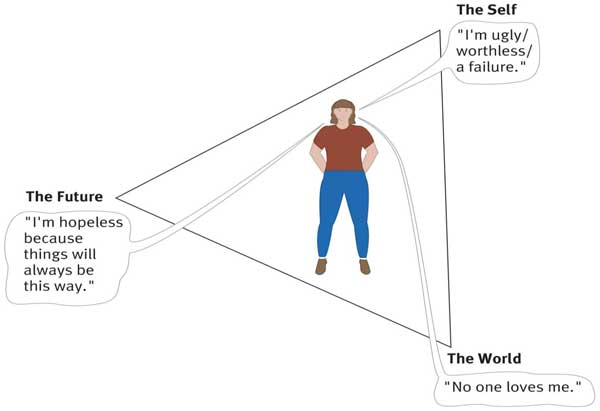How to Talk to Anyone (Junior Talker #4), DeYtH Banger [ebook reader screen .txt] 📗

- Author: DeYtH Banger
Book online «How to Talk to Anyone (Junior Talker #4), DeYtH Banger [ebook reader screen .txt] 📗». Author DeYtH Banger
2. Cognitive theories lend themselves to testing. When experimental subjects are manipulated into adopting unpleasant assumptions or thought they became more anxious and depressed (Rimm & Litvak, 1969).
3. Many people with psychological disorders, particularly depressive , anxiety , and sexual disorders have been found to display maladaptive assumptions and thoughts (Beck et al., 1983).
4. Cognitive therapy has been very effective for treating depression (Hollon & Beck, 1994), and moderately effective for anxiety problems (Beck, 1993).
Limitations of CBT
1. The precise role of cognitive processes is yet to be determined. It is not clear whether faulty cognitions are a cause of the psychopathology or a consequence of it.
Lewinsohn (1981) studied a group of participants before any of them became depressed, and found that those who later became depressed were no more likely to have negative thoughts than those who did not develop depression. This suggests that hopeless and negative thinking may be the result of depression, rather than the cause of it.
2. The cognitive model is narrow in scope - thinking is just one part of human functioning, broader issues need to be addressed.
3. Ethical issues: RET is a directive therapy aimed at changing cognitions sometimes quite forcefully. For some, this may be considered an unethical approach.
Psychological Theories of Depression
Depression is a mood disorder which prevents individuals from leading a normal life, at work socially or within their family. Seligman (1973) referred to depression as the ‘common cold’ of psychiatry because of its frequency of diagnosis.
Depending on how data are gathered and how diagnoses are made, as many as 27% of some population groups may be suffering from depression at any one time (NIMH, 2001; data for older adults).

Behaviorist Theory
Behaviorism emphasizes the importance of the environment in shaping behavior. The focus is on observable behavior and the conditions through which individuals' learn behavior, namely classical conditioning, operant conditioning and social learning theory.
Therefore depression is the result of a person's interaction with their environment.
For example, classical conditioning proposes depression is learned through associating certain stimuli with negative emotional states. Social learning theory states behavior is learned through observation, imitation and reinforcement.
Operant Conditioning
Operant conditioning states that depression is caused by the removal of positive reinforcement from the environment (Lewinsohn, 1974). Certain events, such as losing your job, induce depression because they reduce positive reinforcement from others (e.g. being around people who like you).
Depressed people usually become much less socially active. In addition depression can also be caused through inadvertent reinforcement of depressed behavior by others.
For example, when a loved one is lost, an important source of positive reinforcement has lost as well. This leads to inactivity. The main source of reinforcement is now the sympathy and attention of friends and relatives.
However this tends to reinforce maladaptive behavior i.e. weeping, complaining, talking of suicide. This eventually alienates even close friends leading to even less reinforcement, increasing social isolation and unhappiness. In other words depression is a vicious cycle in which the person is driven further and further down.
Also if the person lacks social skills or has a very rigid personality structure they may find it difficult to make the adjustments needed to look for new and alternative sources of reinforcement (Lewinsohn, 1974). So they get locked into a negative downward spiral.
Critical Evaluation
Behavioral/learning theories makes sense in terms of reactive depression, where there is a clearly identifiable cause of depression. However, one of the biggest problems for the theory is that of endogenous depression. This is depression that has no apparent cause (i.e. nothing bad has happened to the person).
An additional problem of the behaviorist approach is that it fails to take into account cognitions (thoughts) influence on mood.
Psychodynamic Theory
During the 1960's psychodynamic theories dominated psychology and psychiatry. Depression was understood in terms of:
inwardly directed anger (Freud, 1917), introjection of love object loss, severe super-ego demands (Freud, 1917), excessive narcissistic, oral and/or anal personality need (Chodoff, 1972), loss of self-esteem (Bibring, 1953; Fenichel, 1968), and deprivation in the mother child relationship during the first year (Kleine, 1934).Freud’s psychoanalytic theory is an example of the psychodynamic approach. Freud (1917) prosed that many cases of depression were due to biological factors. However, Freud also argued that some cases of depression could be linked to loss or rejection by a parent. Depression is like grief, in that it often occurs as a reaction to the loss of an important relationship.
However, there is an important difference, because depressed people regard themselves as worthless. What happens is that the individual identifies with the lost person, so that repressed anger towards the lost person is directed inwards towards the self. The inner directed anger reduces the individual’s self-esteem, and makes him/her vulnerable to experiencing depression in the future.
Freud distinguished between actual losses (e.g. death of a loved one) and symbolic losses (e.g. loss of a job). Both kinds of losses can produce depression by causing the individual to re-experience childhood episodes when they experienced loss of affection from some significant person (e.g. a parent).
Later, Freud modified his theory stating that the tendency to internalize loss objects is normal, and that depression is simply due to an excessively severe super-ego. Thus, the depressive phase occurs when the individual’s super-ego or conscience is dominant. In contrast, the manic phase occurs when the individual’s ego or rational mind asserts itself, and s/he feels control.
In order to avoid loss turning into depression, the individual needs to engage in a period of mourning work, during which s/he recalls memories of the lost one. This allows the individual to separate him/herself from the lost person, and so reduce the inner-directed anger. However, individuals very dependent on others for their sense of self-esteem may be unable to do this, and so remain extremely depressed.
Critical Evaluation
Psychoanalytic theories of depression have had a profound impact on contemporary theories of depressions. For example, Beck's (1983) model of depression was influenced by psychoanalytic ideas such as the loss of self-esteem (re: Beck's negative view of self), object loss (re: the importance of loss events), external narcissistic deprivation (re: hypersensitivity to loss of social resources) and oral personality (re: sociotropic personality).
However, although being highly influential, psychoanalytic theories are difficult to test scientifically. For example, many of its central features cannot be operationally defined with sufficient precision to allow empirical investigation. Mendelson (1990) concluded his review of psychoanalytic theories of depression by stating:
'A striking feature of the impressionistic pictures of depression painted by many writers is that they have the flavor of art rather than of science and may well represent profound personal intuitions as much as they depict they raw clinical data' (p. 31).
Another criticism concerns the psychanalytic emphasis on unconscious, intrapsychic processes and early childhood experience as being limiting in that they cause clinicians to overlook additional aspects of depression. For example, conscious negative self-verbalisation (Beck, 1967), or ongoing distressing life events (Brown & Harris, 1978).
Cognitive Approach
This approach focuses on people’s beliefs rather than their behavior. Depression results from systematic negative bias in thinking processes.
Emotional, behavioral (and possibly physical) symptoms result from cognitive abnormality. This means that depressed patients think differently to clinically normal people. The cognitive approach also assumes changes in thinking precede (i.e. come before) the onset of depressed mood.
Beck's (1967) Theory
One major cognitive theorist is Aaron Beck. He studied people suffering from depression and found that they appraised events in a negative way.
Beck (1967) identified three mechanisms that he thought were responsible for depression:
The cognitive triad (of negative automatic thinking) Negative self schemas Errors in Logic (i.e. faulty information processing)The cognitive triad are three forms of negative (i.e. helpless and critical) thinking that are typical of individuals with depression: namely negative thoughts about the self, the world and the future. These thoughts tended to be automatic in depressed people as they occurred spontaneously.
For example, depressed individuals tend to view themselves as helpless, worthless, and inadequate. They interpret events in the world in a unrealistically negative and defeatist way, and they see the world as posing obstacles that can’t be handled. Finally, they see the future as totally hopeless because their worthlessness will prevent their situation improving.

As these three components interact, they interfere with normal cognitive processing, leading to impairments in perception, memory and problem solving with the person becoming obsessed with negative thoughts.

Beck believed that depression prone individuals develop a negative self-schema. They possess a set of beliefs and expectations about themselves that are essentially negative and pessimistic. Beck claimed that negative schemas may be acquired in childhood as a result of a traumatic event. Experiences that might contribute to negative schemas include:
Death of a parent or sibling. Parental rejection, criticism, overprotection, neglect or abuse. Bullying at school or exclusion from peer group.However, a negative self-schema predisposes the individual to depression, and therefore someone who has acquired a cognitive triad will not necessarily develop depression. Some kind of stressful life event is required to activate this negative schema later in life. Once the negative schema are activated a number of illogical thoughts or cognitive biases seem to dominate thinking.
People with negative self schemas become prone to making logical errorsin their thinking and they tend to focus selectively on certain aspects of a situation while ignoring equally relevant information.
Beck (1967) identified a number of systematic negative bias' in information processing known as logical errors or faulty thinking. These illogical thought patterns are self-defeating, and can cause great anxiety or depression for the individual. For example:
Arbitrary Inference. Drawing a negative conclusion in the absence of supporting data. Selective Abstraction. Focusing on the worst aspects of any situation. Magnification and Minimisation. If they have a problem they make it appear bigger than it is. If they have a solution they make it smaller. Personalization. Negative events are interpreted as their fault. Dichotomous Thinking. Everything is seen as black and white. There is no in between.Such thoughts exacerbate, and are exacerbated by the cognitive triad. Beck believed these thoughts or this way of thinking become automatic. When a person’s stream of automatic thoughts is very negative you would expect a person to become depressed. Quite often these negative thoughts will persist even in the face of contrary evidence.
Critical Evaluation
Alloy et al. (1999) followed the thinking styles of young Americans in their early 20’s for 6 years. Their thinking style was tested and they were placed in either the ‘positive thinking group’ or ‘negative thinking group’. After 6 years the researchers found that only 1% of the positive group developed depression compared to 17% of the ‘negative’ group. These results indicate there may be a link between cognitive style and development of depression.
However such a study may suffer from demand characteristics. The results are also correlational. It is important to remember that the precise role of cognitive processes is yet to be determined. The maladaptive cognitions seen in depressed people may be a consequence rather than a cause of depression.
Learned Helplessness
Martin Seligman (1974) proposed a cognitive explanation of depression called learned helplessness. According to Seligman’s learned helplessness theory, depression occurs when a person learns that their attempts to escape negative situations make no difference.
As a consequence they become passive and will endure aversive stimuli or environments even when escape is possible.
Seligman based his theory on research using dogs.

A dog put into a partitioned cage learns to escape when the floor is electrified. If the dog is restrained whilst being shocked it eventually stops trying to escape.
Dogs subjected to inescapable electric shocks later failed to escape from shocks even when it was possible to do so. Moreover, they exhibited some of the symptoms of depression found in humans (lethargy, sluggishness, passive in the face of stress and appetite loss).
This led Seligman (1974) to explain depression in humans in terms of learned helplessness, whereby the individual gives up trying to influence their environment because they have learned that they are helpless as a consequence of having no control over what happens to them.
Although Seligman’s account may explain depression to a certain extent, it fails to take into account cognitions (thoughts). Abramson, Seligman, and Teasdale (1978) consequently introduced a cognitive version of the theory by reformulating learned helplessness in term of attributional processes (i.e. how people explain the cause





Comments (0)